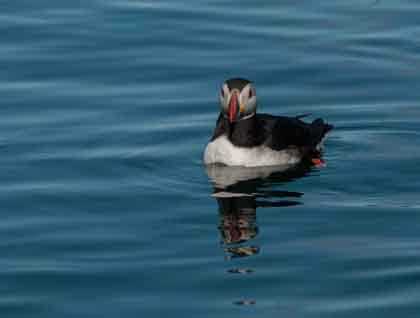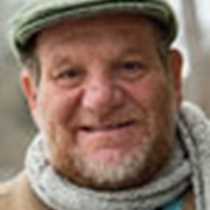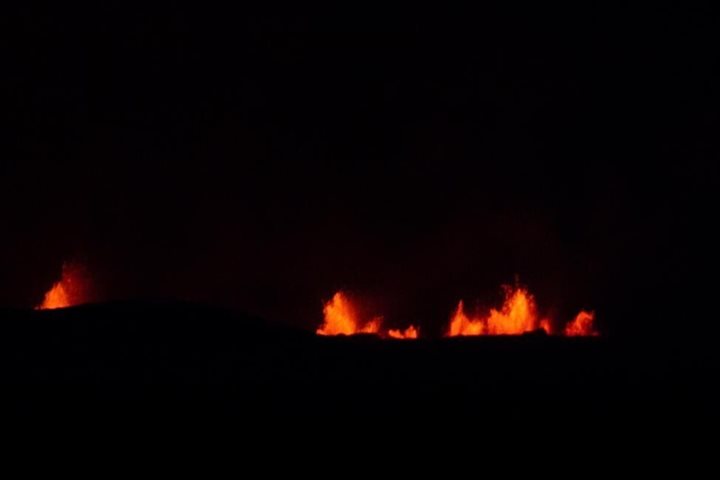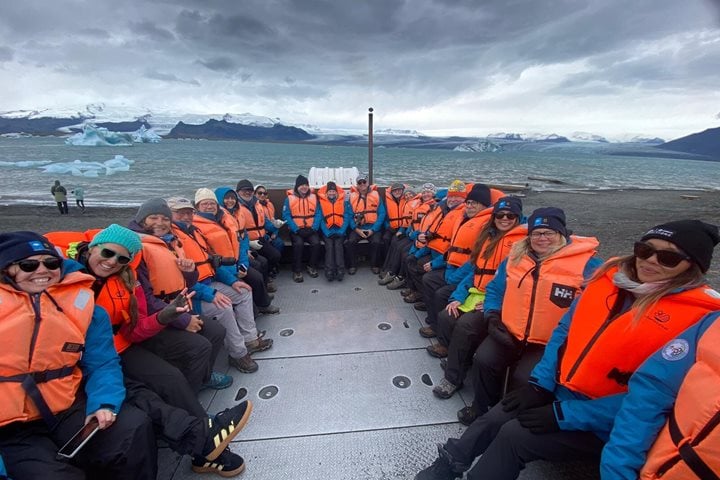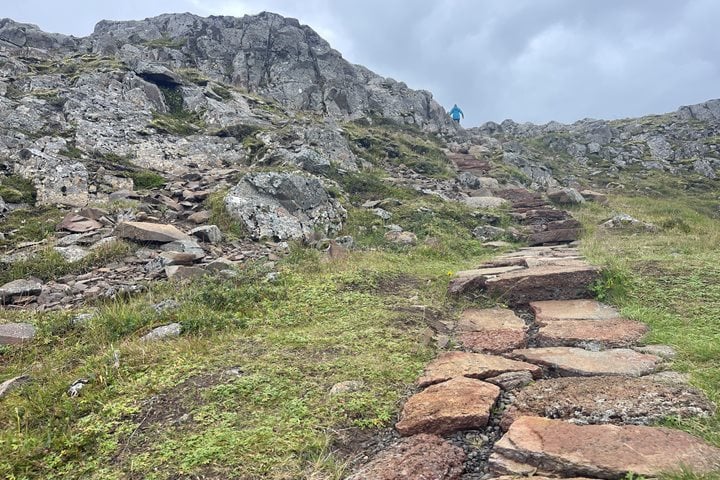We awoke to a misty, moist first morning as we made our approach to the spectacular Latrabjarg cliffs of Iceland’s rugged northwestern shores. These ledged cliffs are perfectly formed to house a major colony of razorbills and other members of the auk family, including Atlantic puffin and black guillemot. Rich feeding grounds were much in evidence with balls of mackerel at every turn and, in spite of the misty conditions, there were good bird sightings including red-necked phalarope in addition to numerous fulmar and kittiwake.
Our afternoon destination was the historic community of Flatey. As the name suggests, this is a flat island, set amidst a multitude of skerries in the middle of Beidafjordur, the wide bay from which exploratory forays to Greenland and beyond were launched at the end of the first millennium. The island has all the attributes that would have made it attractive to early settlers: fertile soil that was easy to work, good sources of food on land and at sea, with the latter providing both protection from enemy attack and open means of communication. Today the island has just one working farm with a single family living on the island all year round but the numbers rise significantly in the summer months as second homeowners come to the island to celebrate their heritage.
Behind the island’s church, which occupies the site of a former Augustinian monastery, is a tiny wooden building that houses the oldest library in continuous use in Iceland. Inside, is a facsimile copy of the Flateyjarbok, a collection of illuminated manuscripts written on vellum that was for centuries kept in the possession of one of the island’s farms. In 1659, with both the Reformation and Danish control of Iceland fully settled, the Flateyjarbok was removed to Copenhagen, eventually to return to Iceland (along with the earlier manuscripts containing the sagas) in 1971 where they are now conserved in a splendid museum in Reykjarvik.
The church itself has a surprising interior for the Lutheran tradition, with an extensive display of colorful murals. The answer to this puzzle is a Catalan artist, Baltasar Semper, who came to the island in the mid 1960s and offered to decorate the church in exchange for free accommodation in the village, an offer that was accepted. The result is quite charming, with a Christ figure behind the altar clothed in a fine Icelandic sweater and murals depicting the history of the Flateyjarbok to one side and scenes from island life on the other. Walks and Zodiac cruises were offered in what had turned into a fine sunny day, one of the best of the summer so far, according to the locals.

